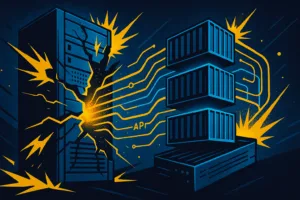Yesterday’s Copilots Spoke “Promptese.”
The first generation of code-completion tools did wonders—provided you supplied a precise incantation: “Generate a Node.js REST endpoint that validates email with regex X.” Every parameter, return type, and edge case had to be spelled out. These systems were autocomplete engines with a large vocabulary; without line-by-line guidance they drifted or hallucinated.
Agents Now Read the Room—and the Repo.
What flipped? Modern agentic frameworks embed the model inside a feedback loop that discovers its own context:
- GitHub Copilot agent mode crawls your workspace, chooses the files to touch, runs tests, and iterates until the build passes—no step-by-step prompt required. You give it a goal like “add dark-mode support,” and it orchestrates the details autonomously.
- Behind the scenes, features such as context passing feed the agent the open file, selected text, and repository metadata automatically, shrinking the specification you have to type.
In short, the model no longer asks, “Which file is the CSS?,” because it already looked.
Bigger Brains, Longer Memories.
The hardware that powers this shift is equally important. New reasoning-centric models like o3 and GPT-4.1 push SWE-bench scores past 69 %, demonstrating they can fix real GitHub issues with only a ticket title and a failing test—classic implicit direction. Their longer context windows (128 K+ tokens) let them load project structure, ADRs, and lint configs in a single prompt, so they infer conventions instead of requesting them.
From Autocomplete to Governance.
Agents aren’t just writing code; they’re patrolling it. In CI pipelines, teams now wire LLM agents to enforce architectural standards—flagging a service that bypasses the API gateway or a Terraform script that violates subnet policy, all from high-level principles like “three-tier isolation.” The prompt is no longer explicit lint rules; it’s an architectural intent encoded once and interpreted continuously.
What This Means for Developers and Architects.
| Old Workflow (Explicit) | Emerging Workflow (Implicit-Aware) |
|---|---|
| Draft exhaustive prompt → generate snippet → paste & debug | State outcome (“migrate to GraphQL”) → agent explores repo, edits files, runs tests |
| CI runs static linters with hard-coded rules | AI agents compare PRs to architecture intent and suggest fixes |
| Developers scan docs to learn conventions | Model ingests docs automatically and mirrors style |
Staying in Control.
Implicit direction isn’t a license for vagueness. Teams still need anchor artifacts—ADR files, CodeOps policy repos, and repository-level “custom instructions”—so the agent has a reliable North Star. The difference is that you write these once, not in every prompt.
The Road Ahead.
As context windows expand and autonomous loops mature, we’ll brief our AI teammates the way we brief humans: objectives, constraints, and values rather than line numbers. The shift frees architects to think in systems, not syntax—but it also places new weight on well-articulated principles. Nail those, and the agents will fill in the rest.
Note: Content created with assistance from AI. Learn More


